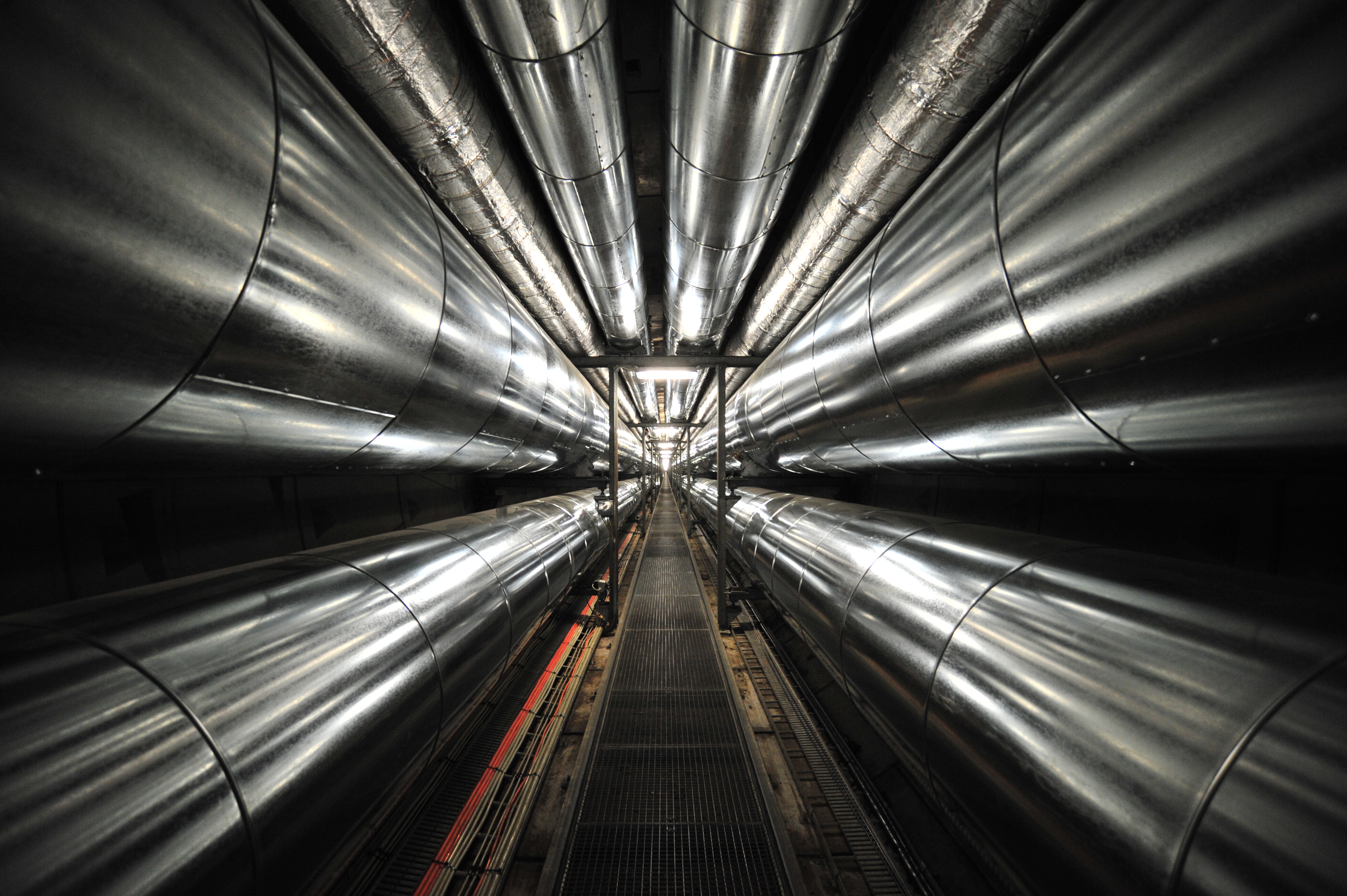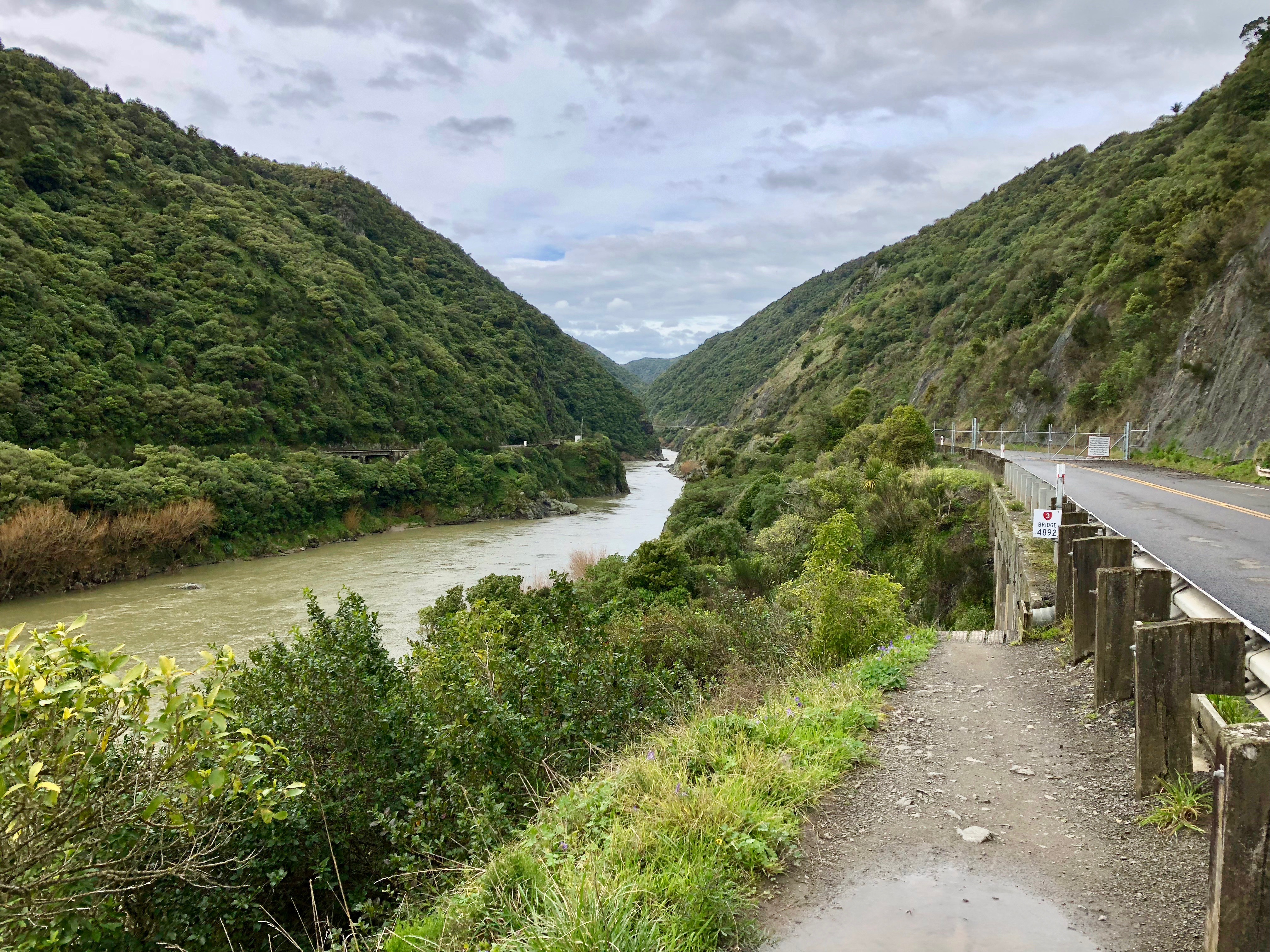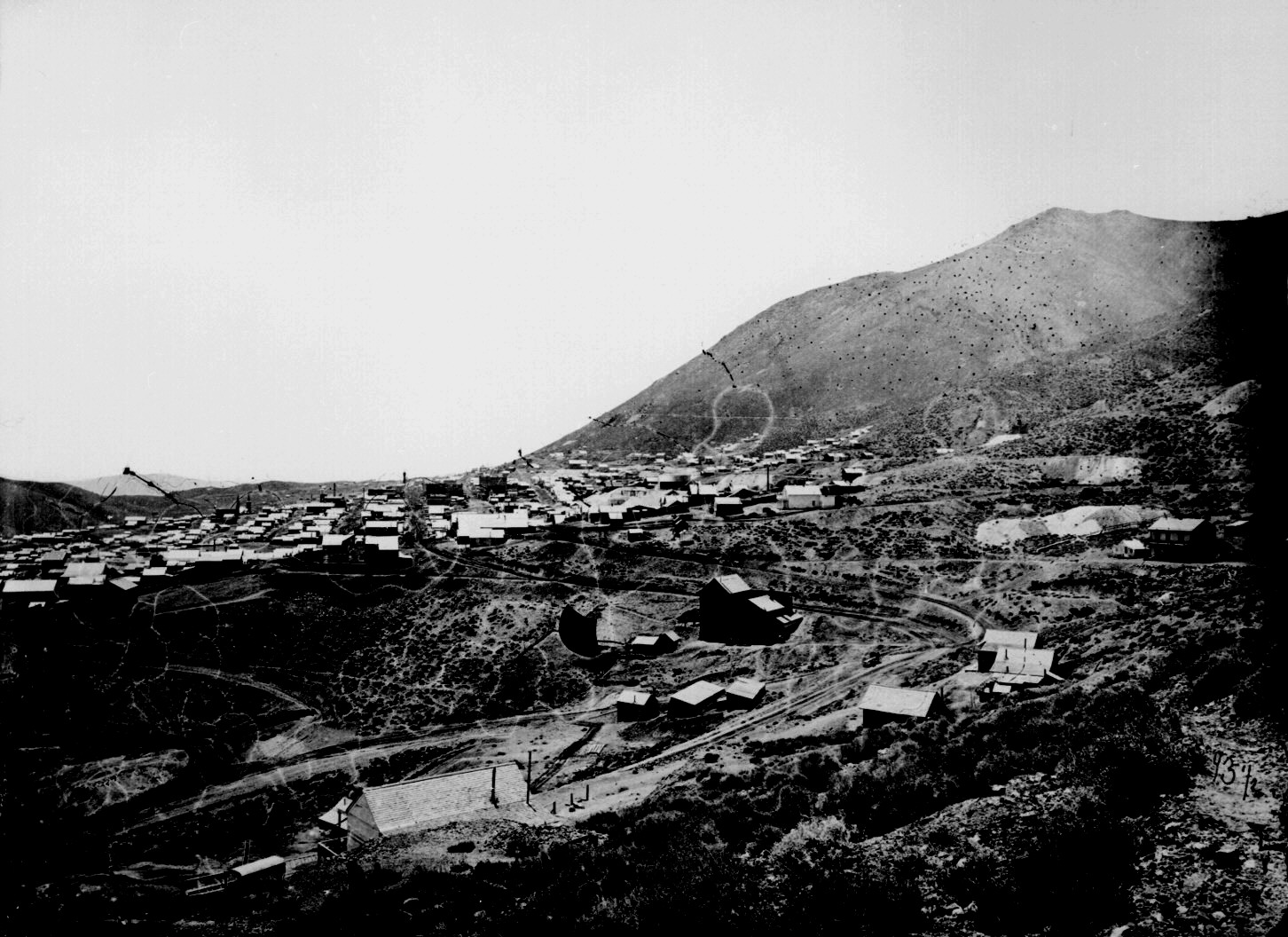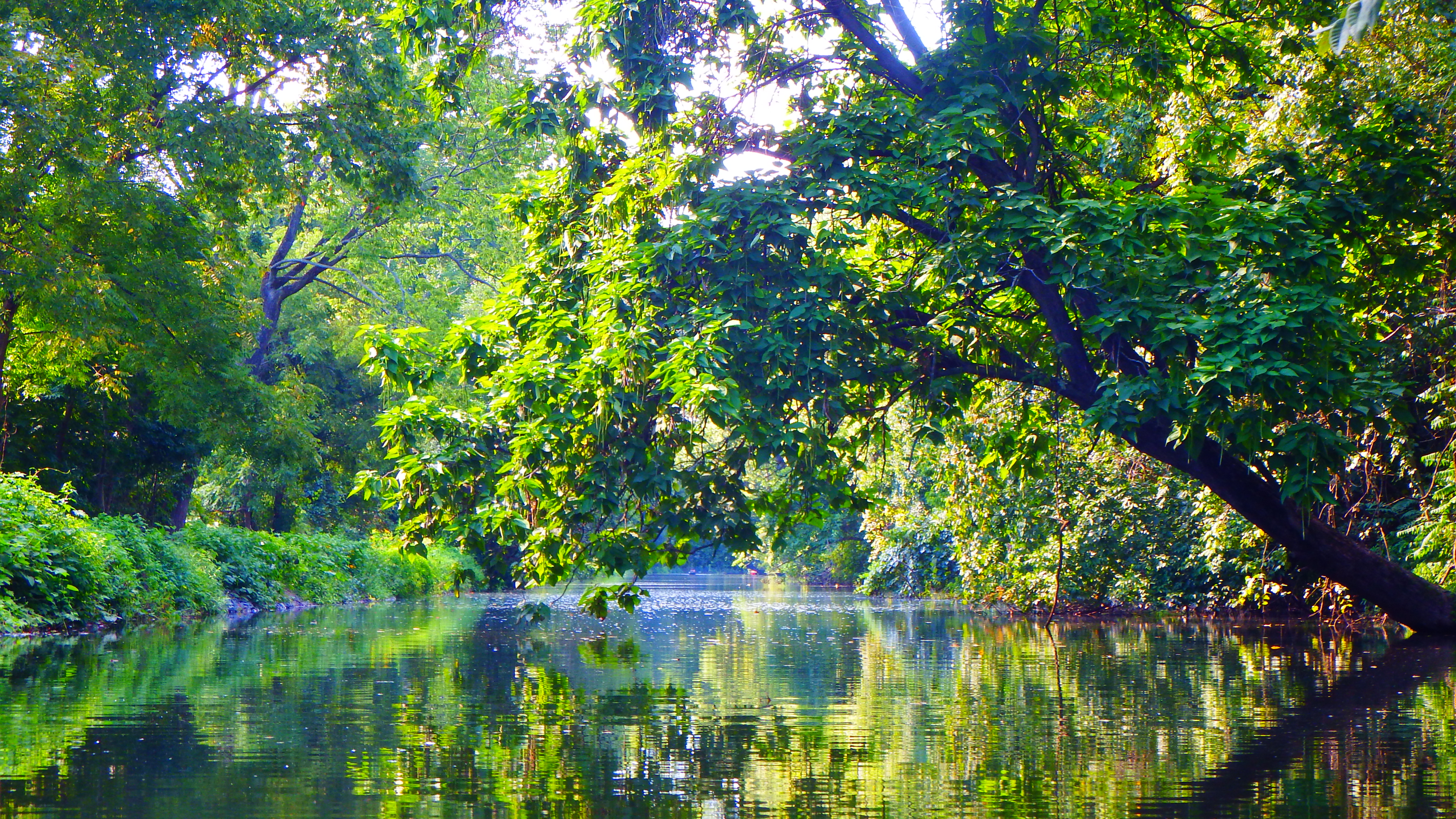|
Daylighting (tunnels)
Daylighting a tunnel is to remove its "roof" of overlying rock and soil, exposing the railway or roadway to daylight and converting it to a railway or roadway Cut (earthmoving), cut. Tunnels are often daylighted to improve vertical or horizontal clearances—for example, to accommodate Double-stack rail transport, double-stack container trains or electrifying rail lines, where increasing the size of the tunnel bore is impractical. List of daylighted tunnels * Australia ** The Moocomonga Tunnel carried the Central Western railway line, Queensland, Central Western railway line through the Gogango Range in Queensland, Australia (). It opened in 1876. The tunnel was daylighted in 1983 due to rock falls which blocked the tunnel from time to time. ** The Coromandel and Pinera Tunnel, Pinera Tunnels on the Belair line in Adelaide, South Australia, both built as a single track tunnel with the line in 1883, were daylighted in the 1920s when the line to Belair, South Australia, Belair wa ... [...More Info...] [...Related Items...] OR: [Wikipedia] [Google] [Baidu] |
Tunnel
A tunnel is an underground or undersea passageway. It is dug through surrounding soil, earth or rock, or laid under water, and is usually completely enclosed except for the two portals common at each end, though there may be access and ventilation openings at various points along the length. A pipeline differs significantly from a tunnel, though some recent tunnels have used immersed tube construction techniques rather than traditional tunnel boring methods. A tunnel may be for foot or vehicular road traffic, for rail traffic, or for a canal. The central portions of a rapid transit network are usually in the tunnel. Some tunnels are used as sewers or aqueducts to supply water for consumption or for hydroelectric stations. Utility tunnels are used for routing steam, chilled water, electrical power or telecommunication cables, as well as connecting buildings for convenient passage of people and equipment.Salazar, Waneta. ''Tunnels in Civil Engineering''. Delhi, India : Wh ... [...More Info...] [...Related Items...] OR: [Wikipedia] [Google] [Baidu] |
Manawatū Gorge
The Manawatū Gorge () is a steep-sided gorge formed by the Manawatū River in the North Island of New Zealand. At long, the Manawatū Gorge divides the Ruahine and Tararua Ranges, linking the Manawatū and Tararua Districts. It lies to the northeast of Palmerston North. Its western end is near the small town of Ashhurst and its eastern end is close to the town of Woodville. As one of the few links between the eastern and western North Island, the gorge is an important transport link, with the Palmerston North–Gisborne Line passing through the gorge, as well as State Highway 3 until 2017. Recreationally, the gorge is part of the Manawatū Gorge Scenic Reserve, with various walking tracks through the surrounding native bush. Whātonga, a Māori explorer from the Kurahaupō canoe, is said to have found the gorge in about the 12th century. Europeans began to use the Manawatū Gorge around the 1840s; in 1842 Bishop George Augustus Selwyn and Chief Justice William Martin p ... [...More Info...] [...Related Items...] OR: [Wikipedia] [Google] [Baidu] |
North Pennsylvania Railroad
North Pennsylvania Railroad was a railroad company which served Philadelphia, Montgomery County, Bucks County and Northampton County in Pennsylvania. It was formed in 1852, and began operation in 1855. The Philadelphia and Reading Railway, predecessor to the Reading Company, leased the North Pennsylvania in 1879. Its tracks were transferred to Conrail and the Southeastern Pennsylvania Transportation Authority (SEPTA) in 1976. History The company incorporated on April 8, 1852, as the Philadelphia, Easton and Water Gap. Construction began on June 16, 1853; the company changed its name to the North Pennsylvania Railroad on October 3 that year. The new name reflected the grand (and unrealized) ambitions of the company to extend all the way across Pennsylvania to Waverly, New York and a junction with the Erie Railroad. The railway opened between Front and Willow Streets, Philadelphia and Gwynedd on July 2, 1855, a distance of . On October 7 the Doylestown Branch opened to D ... [...More Info...] [...Related Items...] OR: [Wikipedia] [Google] [Baidu] |
Virginia City, Nevada
Virginia City is a census-designated place (CDP) that is the county seat of Storey County, Nevada, United States, and the largest community in the county. The city is a part of the Reno, Nevada, Reno–Sparks, Nevada, Sparks Reno, NV Metropolitan Statistical Area, Metropolitan Statistical Area. Virginia City developed as a boomtown with the 1859 discovery of the Comstock Lode, the first major silver deposit discovery in the United States, with numerous mines opening. The population peaked in the mid-1870s, with an estimated 25,000 residents. The mines' output declined after 1878, and the population declined as a result. As of the 2020 United States Census, 2020 Census, the population of Virginia City was 787. History Peter O'Riley and Patrick McLaughlin are credited with the discovery of the Comstock Lode. Henry Comstock, Henry T. P. Comstock's name was associated with the discovery through his own machinations. According to folklore, James Fennimore, nicknamed Old Virginn ... [...More Info...] [...Related Items...] OR: [Wikipedia] [Google] [Baidu] |
Nevada State Route 341
State Route 341 (SR 341) is a state highway in western Nevada connecting US 50 (US 50) near Dayton to Reno via Virginia City. Commonly known as the Virginia City Highway, or Geiger Grade north of Virginia City, the route has origins dating back to the 1860s. Route description State Route 341 begins at a point along US 50 in Lyon County between Mound House and Dayton, about to the west of the latter. From this intersection, the highway proceeds north towards its south junction with SR 342 in Silver City. From here, SR 341 veers eastward around Silver City and Gold Hill, proceeds up the Occidental Grade and bridges over the Virginia and Truckee Railroad at the site of that line's daylighted Tunnel #5 before reconnecting with SR 342 on the south side of Virginia City. The highway runs along C Street as it travels northward through Virginia City. SR 341 leaves Virginia City and travels northerly and westerly through winding sections on both sides of Geiger Summit. The highway ... [...More Info...] [...Related Items...] OR: [Wikipedia] [Google] [Baidu] |
Virginia And Truckee Railroad
The Virginia and Truckee Railroad (stylized as Virginia & Truckee Railroad) is a privately owned heritage railway, heritage railroad, headquartered in Virginia City, Nevada. Its private and publicly owned route is long. When first constructed in the 19th century, it was a commercial freight railroad which was originally built to serve the Comstock Lode mining communities of northwestern Nevada. At its height, the railroad's route ran from Reno, Nevada, Reno south to the state capital at Carson City, Nevada, Carson City. In Carson City, the mainline split into two branches. One branch continued south to Minden, Nevada, Minden, while the other branch traveled east to Virginia City. The first section from Virginia City to Carson City was constructed beginning in 1869 to haul ore, lumber and supplies for the Comstock Lode silver mines. After the federal and state governments began competing with the railroad with highways that operated at a loss, the railroad was abandoned in 1 ... [...More Info...] [...Related Items...] OR: [Wikipedia] [Google] [Baidu] |
Alaska Railroad
The Alaska Railroad is a Class II railroad that operates freight and passenger trains in the state of Alaska. The railroad's mainline runs between Seward, Alaska, Seward on the southern coast and Fairbanks, Alaska, Fairbanks, near the center of the state. It passes through Anchorage, Alaska, Anchorage and Denali National Park and Preserve, Denali National Park, to which 17% of visitors travel by train. The railroad has of track, including siding (rail), sidings, rail yards and branch lines. The main line between Seward and Fairbanks is over long. The branch to Whittier, Alaska, Whittier conveys freight railcars interchanged with the contiguous United States via rail barges sailing between the Port of Whittier and Harbor Island in Seattle. Construction of the railroad started in 1903 when the Alaska Central Railroad built a line starting in Seward and extending north. The Alaska Central went bankrupt in 1907 and was reorganized as the Alaska Northern Railroad Company in 1911, ... [...More Info...] [...Related Items...] OR: [Wikipedia] [Google] [Baidu] |
Schuylkill Canal
The Schuylkill Canal, or Schuylkill Navigation, was a system of interconnected canals and slack-water pools along the Schuylkill River in the U.S. state of Pennsylvania, built as a commercial waterway in the early 19th-century. Chartered in 1815, the navigation opened in 1825, to provide transportation and water power. At the time, the Schuylkill River was the least expensive and most efficient method of transporting bulk cargo, and cities on the East Coast of the United States, U.S. East Coast were experiencing an energy crisis. It fostered the mining of anthracite coal as the major source of industry between Pottsville, Pennsylvania, Pottsville and eastern markets. Along the tow-paths, mules pulled barges of coal from Port Carbon, Pennsylvania, Port Carbon through the water gaps to Pottsville; locally to the port and markets of Philadelphia; and some then by ship or through additional New Jersey waterways, to New York City markets. The Schuylkill Canal was in operation until 1 ... [...More Info...] [...Related Items...] OR: [Wikipedia] [Google] [Baidu] |
Auburn Tunnel
Auburn Tunnel was a 19th-century canal tunnel built for the Schuylkill Canal near Auburn, Pennsylvania. It was the first transportation tunnel in the United States. The tunnel was deliberately added to the canal as a novelty, as the hill it was bored though could have easily been bypassed. It became a major attraction, with people traveling over {{cite web, title=Profile of the Schuylkill Navigation , url=http://www.racc.edu/Yocum/canal/Reaches/Maps/Profiles_A/A-5.gif , access-date=2008-11-29 , url-status=dead , archive-url=https://web.archive.org/web/20101206081820/https://www.racc.edu/Yocum/canal/Reaches/Maps/Profiles_A/A-5.gif , archive-date=2010-12-06 upriver from Philadelphia to see it. It was periodically shortened, and in 1857 was daylighted to become an open-cut. See also * Montgomery Bell Tunnel – a slightly earlier aqueduct tunnel in the United States * Staple Bend Tunnel – the first railroad Rail transport (also known as train transport) is a means of tra ... [...More Info...] [...Related Items...] OR: [Wikipedia] [Google] [Baidu] |
Lime Street Station Tunnel Remnant Seen From Edge Hill Station
Lime most commonly refers to: * Lime (fruit), a green citrus fruit * Lime (material), inorganic materials containing calcium, usually calcium oxide or calcium hydroxide * Lime (color), a color between yellow and green Lime may also refer to: Botany * Australian lime, a species of ''Citrus'' native to Australia and Papua New Guinea * Key lime, a citrus hybrid with a spherical fruit * Persian lime, a citrus fruit species of hybrid origin * ''Tilia'', a genus of trees known in Britain as lime trees, lime-wood, basswood, or linden * Wild lime or ''Zanthoxylum fagara'', a green fruit native to the Americas Chemistry * Agricultural lime, a soil additive containing calcium carbonate and other ingredients * Birdlime, a sticky substance spread on branches to trap small birds * Calcium hydroxide, a.k.a. slaked lime, slack lime, limewater, pickling lime or hydrated lime ** Hydraulic lime, used to make lime mortar ** Limewater or calcium hydroxide, saturated calcium hydroxide solution * Cal ... [...More Info...] [...Related Items...] OR: [Wikipedia] [Google] [Baidu] |
Edge Hill Railway Station
Edge Hill railway station is a Train station, railway station that serves the district of Edge Hill, Liverpool, England and is one of the oldest railway stations in the world. There have been two stations of that name. The first stood a short distance south-west of the present station and its remains are still visible, although the site is not open to the public. Edge Hill is the first station after departure from . The station, and all trains serving it, are operated by Northern Trains. Other services by Avanti West Coast, East Midlands Railway, TransPennine Express and West Midlands Trains pass through the station, although they are Express train, non-stop. Early history The first station opened on 15 September 1830 as part of the Liverpool and Manchester Railway. It was located in a wide by long, deep sandstone cutting, with three tunnels at the west end. The new station As early as May 1831 the directors had concluded that Crown Street station was too far removed ... [...More Info...] [...Related Items...] OR: [Wikipedia] [Google] [Baidu] |
Liverpool Lime Street Railway Station
Liverpool Lime Street is a railway station complex located on Lime Street, Liverpool, Lime Street in Liverpool city centre. Although publicly a single, unified station, it is operationally divided into two official railway stations: Liverpool Lime Street High Level, the main station serving the city centre of Liverpool and the oldest still-operating grand terminus mainline station in the world; and Liverpool Lime Street Low Level, an underground Wirral line station (part of the List of underground stations of the Merseyrail network, Merseyrail network) connected to the main terminal building by a pedestrian subway below street-level. Despite their operational distinctions, both stations are integrated from a passenger perspective, sharing signage, access points and overall station identity. Lime Street High Level is one of 18 stations managed by Network Rail, while Lime Street Low Level is managed directly by the train operator, Merseyrail. A branch of the West Coast Mai ... [...More Info...] [...Related Items...] OR: [Wikipedia] [Google] [Baidu] |









